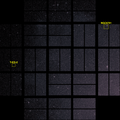Usòrò:329161main fullFFIHot300.png

Otu nyochaa a ha:599 × 600 piksels Ndị ọzọ mkpebi:240 × 240 piksels | 479 × 480 piksels | 767 × 768 piksels | 1,023 × 1,024 piksels | 1,618 × 1,620 piksels.
Failụ si na nke mbu (1,618 × 1,620 pixel, ívù akwukwo orunótu: 1.46 MB, MIME nke: image/png)
Ịta nke usòrò
Bìri èhì/ogè k'ị hụ òtù ụ̀fa dị̀ m̀gbè ahụ̀.
| Èhì/Ogè | Mbọ-aka | Ógólógó na asaá | Òjìème | Nkwute | |
|---|---|---|---|---|---|
| dị ùgbu â | 13:02, 31 Ọktoba 2015 |  | 1,618 × 1,620 (1.46 MB) | Antonsusi | Brightness adjusted |
| 22:18, 30 Disemba 2009 |  | 1,618 × 1,620 (1.43 MB) | Supportstorm | Try this again | |
| 22:17, 30 Disemba 2009 |  | 1,618 × 1,620 (1.43 MB) | Supportstorm | Fix | |
| 22:16, 30 Disemba 2009 |  | 1,618 × 1,620 (1.43 MB) | Supportstorm | Image Adjustment: Auto levels on contrast and color | |
| 17:55, 16 Eprel 2009 |  | 1,618 × 1,620 (1.49 MB) | KGyST | Cropped | |
| 17:50, 16 Eprel 2009 |  | 2,400 × 1,800 (1.58 MB) | KGyST | {{Information |Description={{en|1=This image from NASA's Kepler mission shows the telescope's full field of view -- an expansive star-rich patch of sky in the constellations Cygnus and Lyra stretching across 100 square degrees, or the equivalent of two si |
Ojiji faịlụ
Ihe ndị na-eso ihe eji Ihu akwụkwọ eme na faịlụ a:
Ejiji failụ zụrụ ọha
Wikis ndi a edeputara na eji kwa failụ a:
- Ihe eji na de.wikipedia.org
- Ihe eji na en.wikipedia.org
- Ihe eji na fr.wikipedia.org
- Ihe eji na id.wikipedia.org
- Ihe eji na it.wikipedia.org
- Ihe eji na ja.wikipedia.org
- Ihe eji na ka.wikipedia.org
- Ihe eji na lb.wikipedia.org
- Ihe eji na lv.wikipedia.org
- Ihe eji na pnb.wikipedia.org
- Ihe eji na pt.wikipedia.org
- Ihe eji na ur.wikipedia.org
- Ihe eji na uz.wikipedia.org
- Ihe eji na vi.wikipedia.org
- Ihe eji na zh.wikipedia.org


